No products in the cart.
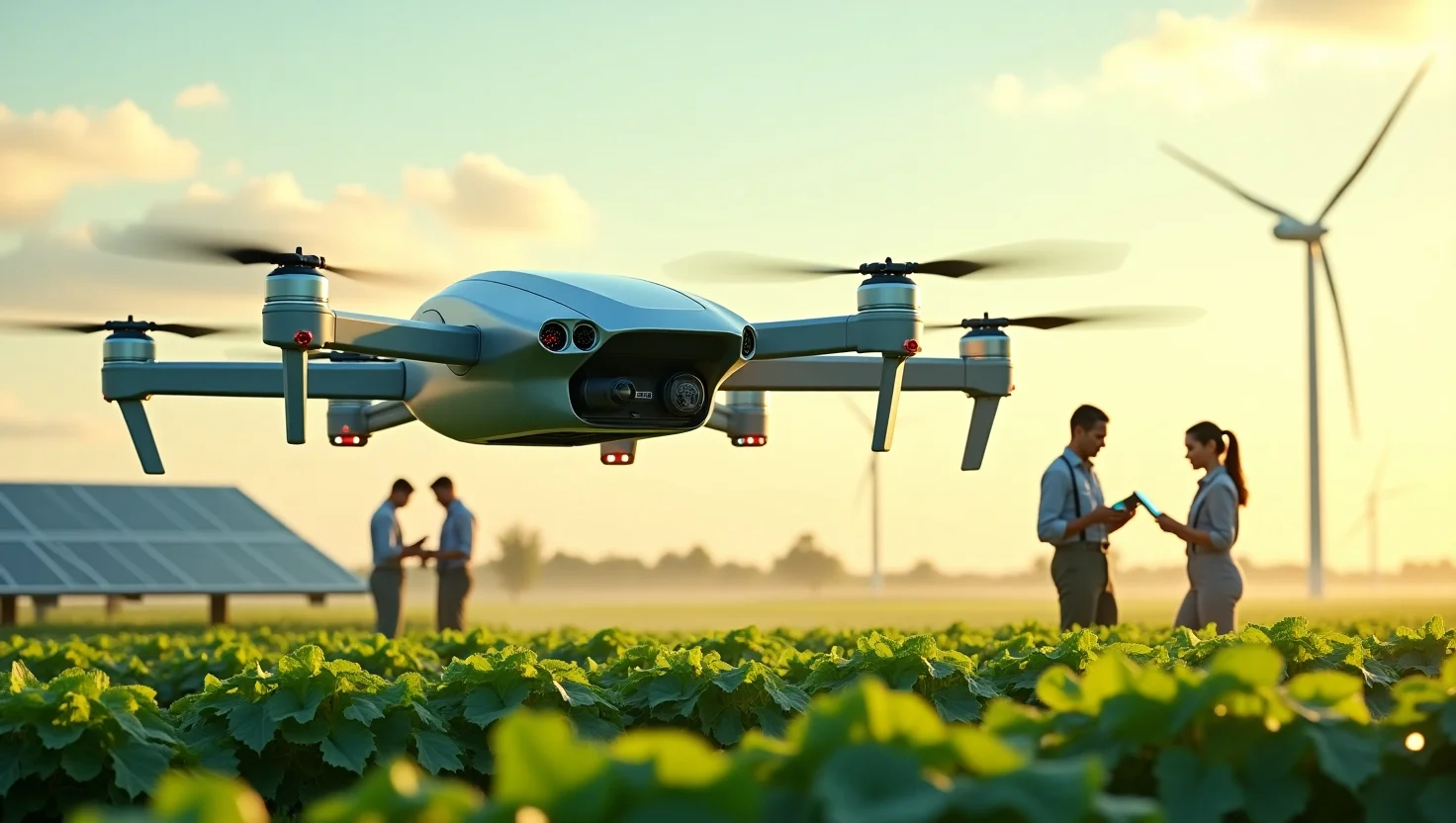
1. Introduction:
Global food demand is projected to increase by nearly 70% by 2050, yet traditional farming practices are struggling to keep up. Between rising input costs, unpredictable climate conditions, and a growing shortage of skilled labor, the agricultural industry stands at a crossroads. Farmers across the world face immense pressure to produce more with fewer resources, and faster.
Enter AI-driven drones, a groundbreaking innovation combining agricultural drone technology with artificial intelligence to transform farming from the ground up. These smart farming drones are reshaping the way we monitor crops, apply pesticides, and manage irrigation with unprecedented accuracy and efficiency.
Unlike conventional drones, AI-powered agricultural drones don’t just fly and record; they learn, analyze, and adapt. They use machine learning algorithms, multispectral imaging, and real-time data analysis to detect crop stress, optimize spraying patterns, and even predict potential yield outcomes. What once took days of manual labor can now be done in hours, or even minutes.
This article explores how precision farming with AI drones is solving agriculture’s toughest problems. From real-world success stories to practical implementation tips, we’ll show how this smart technology isn’t just a trend, it’s the future of food production.
Ready to see how drones can help you farm smarter, not harder? Let’s dive into the biggest challenges and the tech that’s solving them.
2. Problem #1: Lack of Efficient Crop Monitoring
One of the most pressing challenges farmers face today is the inability to monitor crop health accurately and consistently. Traditional methods, such as walking through fields, visual inspections, or relying on satellite images, are either too time-consuming, labor-intensive, or lack precision. By the time visible symptoms of crop stress appear, it’s often too late to mitigate the damage.
This is where AI-powered drones are making a huge difference. These drones are equipped with multispectral cameras, thermal sensors, and advanced computer vision systems that can scan vast fields in minutes. They collect detailed data on plant health, soil condition, and pest activity, all from above. The result? Farmers get real-time insights that allow for early intervention and targeted action.
Using AI drone crop monitoring, farmers can detect issues like nutrient deficiencies, fungal infections, or irrigation inconsistencies long before they’re visible to the naked eye. These insights are processed using machine learning models, which continuously improve in accuracy the more they analyze.
Beyond saving time, this approach improves decision-making. Instead of treating entire fields, farmers can take a precision agriculture approach, addressing only the areas that need attention, thereby reducing waste and improving overall yield.
As more growers turn to smart farming solutions, AI in precision farming is becoming less of a luxury and more of a necessity. This data-driven method of crop monitoring is helping farmers stay one step ahead of problems and one step closer to sustainability.
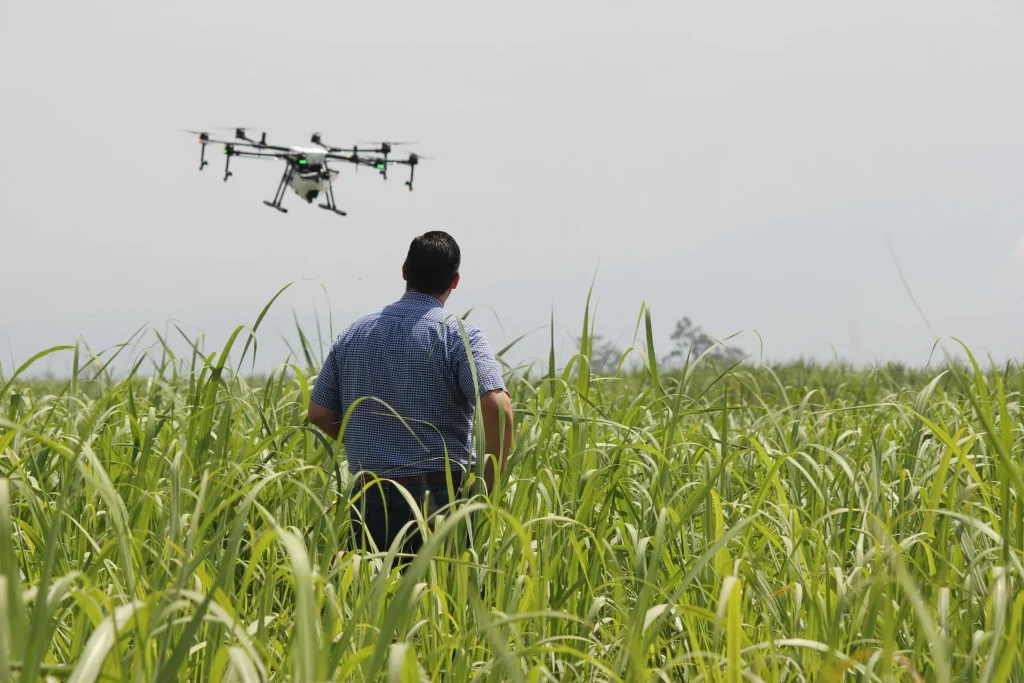
3. Problem #2: Excessive Use of Chemicals and Water
In conventional farming, spraying pesticides or irrigating crops often involves treating entire fields, whether they need it or not. This blanket approach not only wastes valuable resources like water and agrochemicals but also leads to runoff that harms the environment. It’s inefficient, expensive, and unsustainable in the long run.
AI-powered drones are solving this problem with precision spraying and intelligent water management. These drones can fly over fields, analyze soil moisture levels and plant health, and identify exactly which sections require treatment. They then apply fertilizers or pesticides only where necessary, reducing input usage by up to 70%.
With integrated multispectral sensors and thermal imaging, AI drones create detailed field maps that guide variable-rate applications of chemicals and water. The result is not just healthier crops, but healthier ecosystems.
This type of precision agriculture, powered by drones, doesn’t just benefit the planet; it makes economic sense. Farmers report significant reductions in operating costs, faster ROI on drone technology, and improved yields due to less stress on crops.
Moreover, AI systems continue learning over time. With machine learning capabilities, drones refine their targeting algorithms based on previous results, improving accuracy with every flight.
By reducing excessive chemical usage and optimizing irrigation, AI-driven drone spraying technology is helping farmers strike a balance between productivity and sustainability, a critical step for the future of global agriculture.
4. Problem #3: Time & Labor Shortages
Labor shortages are becoming a major hurdle for farmers worldwide. With fewer young people entering agriculture and a growing demand for higher output, the gap between what needs to be done and who’s available to do it is widening. Tasks like crop inspections, spraying, and planting are physically demanding, repetitive, and time-sensitive, yet essential to productivity.
AI-driven drones are providing a smart solution to this growing crisis. Unlike traditional labor, drones can be deployed instantly, work 24/7, and cover hundreds of acres in a fraction of the time it would take a team of workers. They bring the power of autonomous agriculture to the hands of even small-scale farmers.
With advanced flight path automation, these drones can be pre-programmed to follow precise routes for spraying, scouting, or mapping. Meanwhile, onboard AI algorithms analyze field data and make real-time adjustments. Whether it’s adjusting altitude to account for terrain or modifying spray amounts based on plant health, the tech handles it all, no operator needed.
This level of farm automation with drones reduces dependence on seasonal labor and minimizes delays due to human resource limitations. It also enables faster decision-making, especially during critical growth stages when timing can make or break a yield.
As more farms adopt smart farming automation, AI drones are becoming not just a tool, but a partner in production. They allow growers to do more with less, helping bridge the labor gap while ensuring consistent, efficient farm management.

5. Case Studies: Success Stories from the Field
While the concept of AI-powered drones in agriculture sounds futuristic, many farmers around the world are already reaping the benefits. These real-life success stories highlight how drone technology is solving everyday challenges in diverse farming environments.
India – Cutting Costs with Precision Spraying
In Maharashtra, cotton farmers using drone spraying solutions reduced pesticide usage by over 80%. The drones, equipped with AI-based crop recognition, identified specific pest zones and treated only those areas. This not only saved money on chemicals but also reduced crop stress and improved yields.
Brazil – Boosting Efficiency in Sugarcane Farming
Brazilian farmers managing large sugarcane plantations turned to agricultural drones with NDVI imaging to monitor crop health. With AI-powered analytics, they identified areas with poor growth and adjusted fertilization strategies. The result? A 15% increase in output in just one growing season.
USA – Integrating AI Drones with IoT Sensors
In California, vineyards are combining AI farming drones with IoT-based weather and soil sensors. The drone gathers aerial data, while ground sensors track moisture and temperature. Together, the system creates a predictive model that guides irrigation and harvesting schedules, saving time, water, and labor.
These examples prove that AI in precision farming is not a trend, but a transformative force. Whether in small farms or commercial-scale operations, AI-driven drones are already reshaping how food is grown, managed, and harvested.
6. How to Get Started: Adopting Drone Tech on Your Farm
Thinking about integrating AI-driven drones into your farm operations? It might sound complex, but adopting this transformative technology is easier than you think—and the benefits can be immediate.
Step 1: Identify Your Needs
Start by pinpointing your biggest challenges. Is it monitoring crop health, optimizing irrigation, or reducing chemical usage? Knowing your specific pain points will help you choose the right type of agricultural drone solution—whether it’s for aerial mapping, spraying, or multispectral analysis.
Step 2: Choose the Right Equipment
Look for drones built for precision agriculture. Features like AI-based data processing, NDVI sensors, and automated flight planning are key. Brands such as DJI, XAG, and Parrot offer specialized drones for different farming needs.
Step 3: Consider Software & Support
Drones are only as powerful as the software that supports them. Platforms that offer real-time field analytics, crop health reports, and integration with other farm systems (like IoT sensors) can greatly enhance your decision-making. Also, opt for vendors who offer training and ongoing technical support.
Step 4: Start Small, Scale Smart
Begin with a pilot project on a small section of your land. Track the results, reduced input usage, labor savings, and yield improvements. Once you’re confident, expand gradually across your entire operation.
With the right tools and strategy, implementing AI and drone technology in agriculture can be both accessible and rewarding. It’s not just about adopting new tech, it’s about future-proofing your farm.

7. Conclusion & Call to Action
AI-driven drones are no longer a futuristic concept; they’re here, and they’re already reshaping the agricultural landscape. By solving critical issues like crop monitoring, excessive chemical use, and labor shortages, these drones are empowering farmers to grow smarter, not harder.
The integration of AI in agriculture is not just improving productivity, it’s enhancing sustainability, reducing costs, and offering farmers a scalable solution to the challenges of modern food production. From smallholder farmers in India to large commercial operations in the US, drone technology is proving that it can adapt to any farming system and deliver real, measurable benefits.
Are you ready to take your farming operation into the future? The possibilities are endless with AI-powered drones. Whether you’re looking to reduce pesticide costs, improve irrigation efficiency, or streamline labor-intensive tasks, drones offer a pathway to more sustainable and profitable farming practices.
It’s time to embrace the future of agriculture, where precision, sustainability, and innovation come together in the skies above your fields.
Call to Action:
Interested in seeing drones in action on your farm? Reach out to an agricultural drone provider for a demo or explore our comprehensive guide on implementing AI-driven drone technology. Your farm’s next step toward the future starts now.
FAQs:
Q1. How do AI drones improve precision agriculture?
AI drones enhance precision agriculture by providing real-time data on crop health, soil conditions, and environmental factors. Equipped with multispectral sensors and AI algorithms, these drones can identify areas requiring attention, enabling targeted interventions such as precise irrigation, fertilization, and pest control. This approach reduces resource waste and improves crop yields.
Q2. What are the regulatory requirements for using drones in farming?
Farmers must adhere to specific regulations when operating drones for agricultural purposes. In the U.S., this includes obtaining FAA Part 107 certification for commercial drone use, understanding airspace restrictions, and possibly applying for Beyond Visual Line of Sight (BVLOS) waivers. Compliance with privacy laws and data security standards is also essential.
Q3. Are AI drones cost-effective for small-scale farms?
While the initial investment in AI drones can be significant, they offer long-term cost savings by reducing labor, minimizing chemical usage, and optimizing resource application. For small-scale farms, drone-as-a-service (DaaS) models provide access to drone technology without the need for large capital expenditures, making it more accessible.
Q4. What crops benefit most from AI drone technology?
AI drones are particularly beneficial for high-value and large-acreage crops such as corn, soybeans, wheat, and cotton. These crops benefit from precise monitoring and management, leading to improved yields and resource efficiency. However, drone technology is adaptable and can be applied to a wide range of crops, including fruits and vegetables, depending on the specific needs of the farm.
Q5. How does AI in drones contribute to sustainable farming practices?
AI-driven drones promote sustainability by enabling precision in resource application, reducing the overuse of water, fertilizers, and pesticides. This precision minimizes environmental impact, conserves resources, and supports biodiversity. Additionally, AI systems can assist in implementing conservation practices and monitoring soil health, further contributing to sustainable farming.
Related Articles
Farm Automation
How AI Is Helping Organic Farmers Stay Competitive
1. Introduction: Organic farming has always been admired for its sustainability, purity,...
Farm Automation
AI Farm Assistants: Are Virtual Advisors the Future of Agriculture
1. Introduction: Imagine having a personal farm assistant who never sleeps, analyzes...
Farm Automation
How U.S. Farmers Use AI to Monitor Weather and Make Better Decisions
1. Introduction: For generations, U.S. farmers have relied on intuition and traditional...
Farm Automation
Can AI Replace Manual Labor on U.S. Farms? Here’s What to Know
1. Introduction: Imagine a cornfield in Iowa where machines handle everything from...
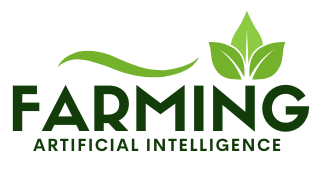

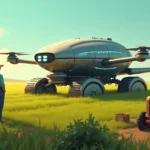
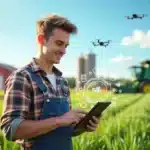

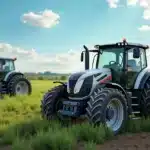

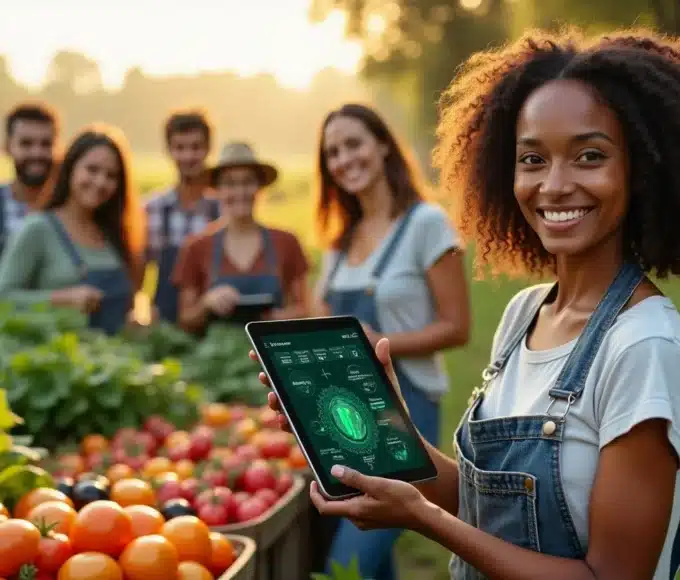
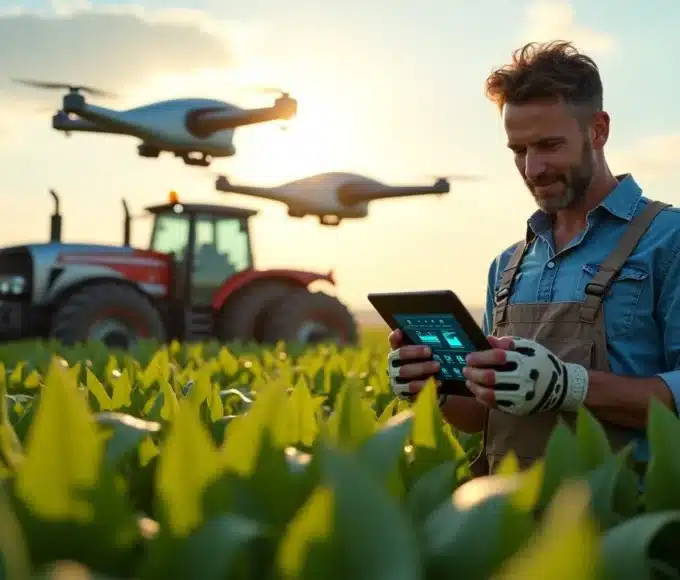
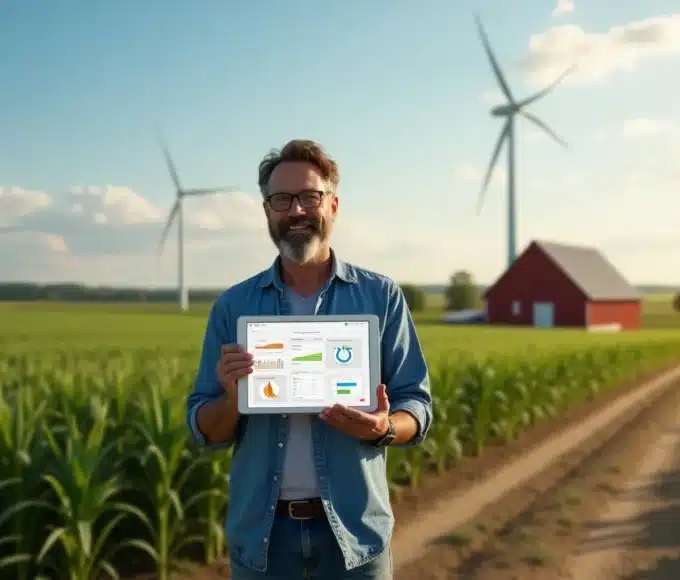
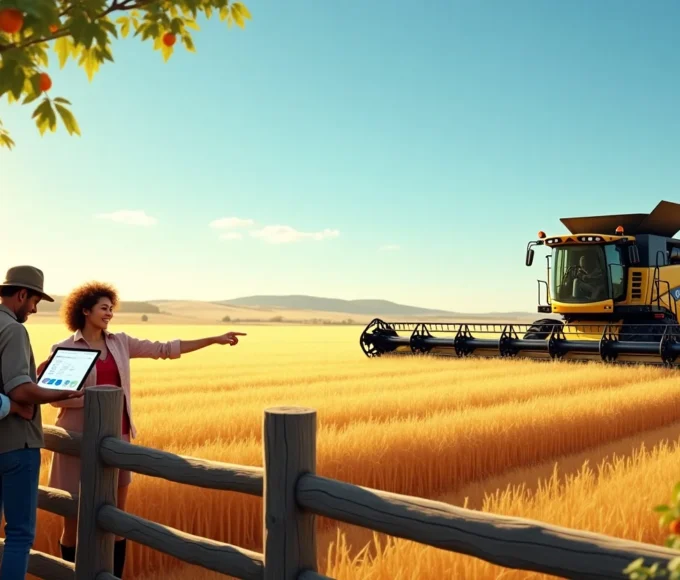
Leave a comment